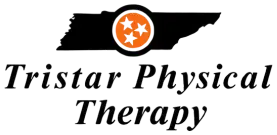A Comprehensive Guide to the Different Types of Occupational and Physical Therapy: What to Expect at Each Stage of Recovery
Injuries or illnesses can take a toll on our physical and mental health, as well as our daily lives. Fortunately, occupational and physical therapy can help us get back on track and regain our independence. Whether you’ve been injured in a car accident or are recovering from surgery, this ultimate guide will provide you with an overview of the different types of therapy and what to expect at each stage of recovery.
Get Back on Track: The Ultimate Guide to Occupational and Physical Therapy
Occupational therapy focuses on helping people perform daily activities, such as bathing, dressing, and grooming, as well as work-related tasks. The therapist uses adaptive equipment, such as splints, to facilitate the patient’s movement and independence. In the beginning, the therapist will evaluate the patient’s abilities, needs, and goals to develop a customized treatment plan. The therapy may involve exercises to improve strength, flexibility, and coordination, as well as cognitive and sensory integration techniques. The therapist may also recommend modifications to the patient’s environment, such as grab bars, handrails, and ramps, to make it safer and more accessible.
Physical therapy, on the other hand, focuses on restoring the patient’s physical function, such as mobility, strength, and balance. The therapist uses manual techniques, such as massage and stretching, as well as modalities, such as ice and heat, to reduce pain and inflammation. In the initial assessment, the therapist will evaluate the patient’s range of motion, strength, and posture to determine the underlying causes of the symptoms. The therapy may involve exercises to improve endurance, stability, and flexibility, as well as gait training and balance retraining. The therapist may also educate the patient on how to prevent further injuries and manage chronic conditions.
Explore the Different Types of Therapy and What Each Stage of Recovery Entails
The different types of occupational and physical therapy include pediatric, geriatric, sports, and neurological therapy. Pediatric therapy is designed for children with developmental delays, sensory processing disorders, and physical disabilities. The therapist uses play-based activities and adaptive equipment to improve the child’s motor skills, socialization, and self-esteem. Geriatric therapy is designed for seniors with age-related conditions, such as arthritis, stroke, and dementia. The therapist focuses on maintaining the patient’s independence, preventing falls, and managing chronic pain. Sports therapy is designed for athletes with sports-related injuries, such as sprains, strains, and fractures. The therapist uses sport-specific exercises and techniques to restore the athlete’s performance and prevent future injuries. Neurological therapy is designed for patients with neurological conditions, such as Parkinson’s disease, multiple sclerosis, and spinal cord injuries. The therapist uses specialized techniques, such as neurofeedback and constraint-induced movement therapy, to improve the patient’s motor function, sensation, and cognition.
In each stage of recovery, the patient may experience different challenges and progress at different rates. In the acute stage, the therapist focuses on reducing pain, inflammation, and swelling, and preventing complications, such as blood clots and infections. In the subacute stage, the therapist focuses on restoring the patient’s range of motion, strength, and function, and preparing them for the next stage. In the chronic stage, the therapist focuses on maintaining the patient’s function, preventing further injuries, and improving their quality of life. The therapist may also provide emotional support and counseling to help the patient cope with the physical and psychological aspects of the recovery process.
Occupational and physical therapy can be a life-changing experience that helps you regain your independence, mobility, and confidence. By exploring the different types of therapy and understanding what each stage of recovery entails, you can be better prepared and motivated to overcome the challenges and achieve your goals. Remember to communicate openly with your therapist, follow their instructions, and stay positive and proactive throughout your journey. With the right mindset and support, you can get back on track and enjoy a fulfilling and active life.

